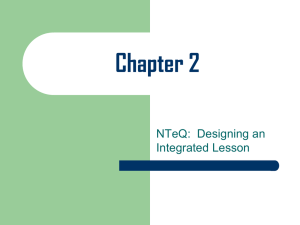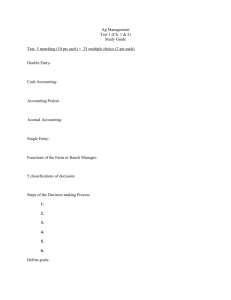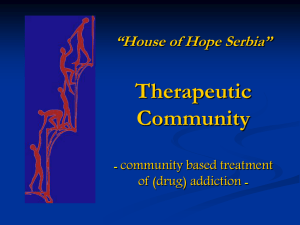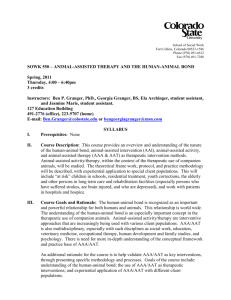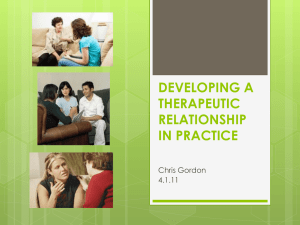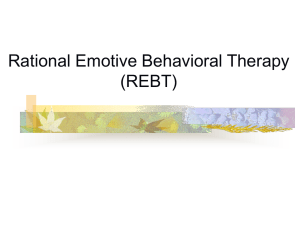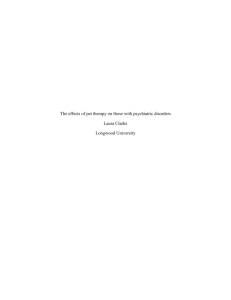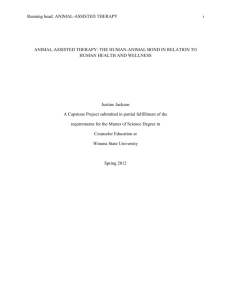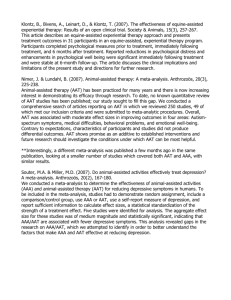AAT Presentation-1 - Association for Adult Development & Aging
advertisement
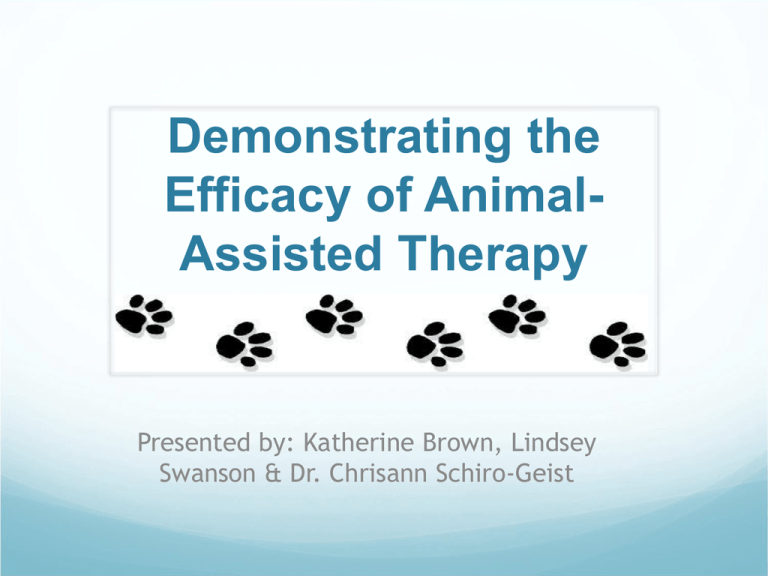
Demonstrating the Efficacy of AnimalAssisted Therapy Presented by: Katherine Brown, Lindsey Swanson & Dr. Chrisann Schiro-Geist Key Terms Human/Animal Bond Animal-Assisted Activities Animal-Assisted Therapy Theoretical Background Biochemical Theories Learning Theories Social Cognitive Theories Social Theories *Attachment Theory* Previous Efforts Early and Anecdotal Accounts - Quakers and the York Retreat - Rehab for WWI veterans - Dr. Boris Levinson Empirical Studies - Friedmann, Katcher, Lynn, & Thomas (1980) - Studies with a Focus on Developmental Disabilities Current Study Purpose: To examine the impact of animal assisted therapy on overall functioning in adults with intellectual disabilities Hypothesis: Participants engaging in specific therapeutic interventions with a live therapy animal will improve on the behavioral domains above and beyond that of participants receiving extra therapeutic time with a human caretaker. Methods - Participants 20 adults 13 female, 7 male age range: 17-50 years, Mage = 26.95, SD = 9.87 All participants diagnosed with an intellectual disability to some degree Methods - Measures Measurement of Pet Intervention (MOPI; Schiro-Geist, 2001) Eight questions assessing 4 behavioral dimensions: Attention span Physical movement Communication Compliance Two components: general level/quality & time/frequency Cronbach’s Alpha = 0.94 - 0.95 Methods - Procedures Staff members completed 2 MOPIs for all participants, one prior to intervention and one post-intervention Three groups were developed: 2 intervention groups and 1 control group - Modification: 2 groups after 6 weeks The intervention was conducted for 20 minute sessions, twice weekly for eight weeks Intervention 8-week manualized AAT program Week 1: Therapeutic goals- Rapport-building; Play Day 1 Activities- Petting; Ring Around the Rosy Day 2 Activities- Petting; Object Toss Week 2: Therapeutic goals- Pet Care; Grooming Day 1 Activities- Brush + Treat Day 2 Activities- Walk Preparation Intervention Week 3: Therapeutic Goals- Language; Commands Day 1 Activities- Basic Dog Commands Day 2 Activities- Play Tambourine Week 4: Therapeutic Goals- Safety; Etiquette Day 1 Activities- Walk Outdoors Day 2 Activities- Encounter Others Data Analysis & Results Correlations were inconclusive MANOVA – both groups improved over time with no significant differences between groups Results show no adverse effects on participants Anecdotal reports Limitations & Implications Limitations Inconsistency of attendance Difficulty in providing a manualized program within a dynamic summer program Difficulty in keeping treatment and control groups separated Implications The use of AAT for adults with intellectual disabilities may be an alternative and effective form of treatment References Chandler, C. K. (2012). Animal assisted therapy in counseling (2nd ed.). New York: Routledge. Fine, A. H. (2010). Handbook on animal-assisted therapy: Theoretical foundations and guidelines for practice (3rd ed.). Boston: Academic Press. Friedmann, E., Katcher, A. H., Lynch, J. J., & Thomas, S. A. (1980). Animal companions and one-year survival of patients after discharge from a coronary care unit. Public Health Reports, 95, 307-312. References Hooker, S. D., Freeman, L. H., & Stewart, P. (2002). Pet therapy research: A historical review. Holistic Nursing Practice, 17, 17-23. Martin, F., & Farnum, J. (2002). Animal-assisted therapy for children with pervasive developmental disorders. Western Journal of Nursing Research, 24, 657-670. Heimlich, K. (2001). Animal-assisted therapy and the severely-disabled child: A quantitative study. Journal of Rehabilitation, 67, 48-54. References Lind, N. 2009. Animal assisted therapy activities to motivate and inspire. Lombard, IL: PYOW Publishing, Ink. Nimer, J., & Lundahl, B. (2007). Animal-assisted therapy: A meta-analysis. Anthrozoos, 20, 225-238. Retrieved September 16, 2008, from the Academic OneFile database. Questions?
